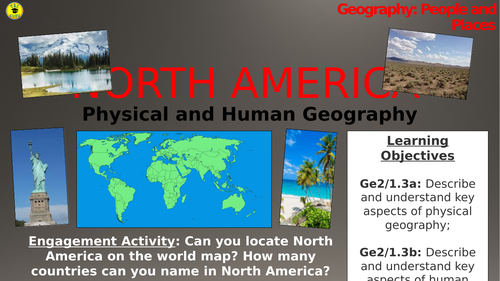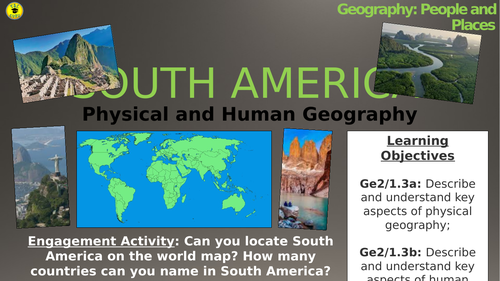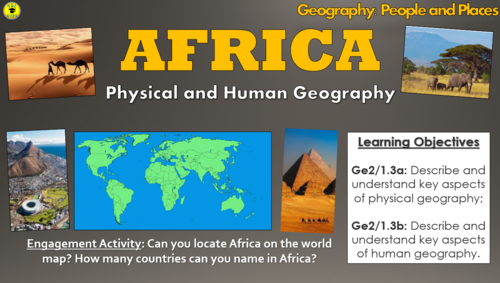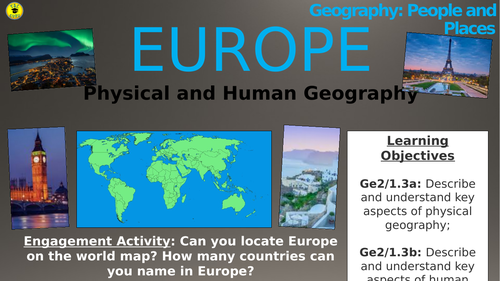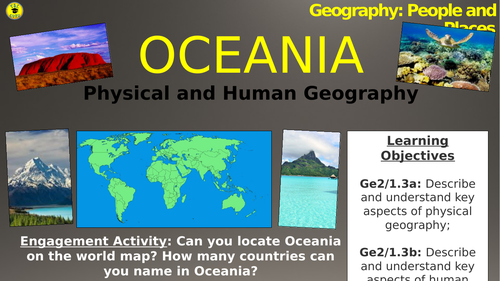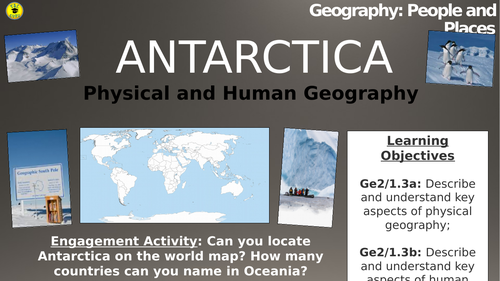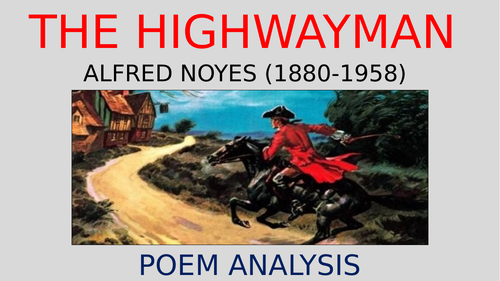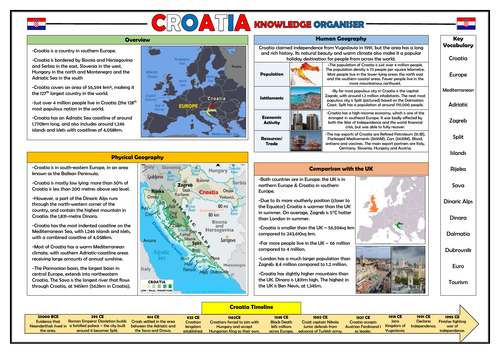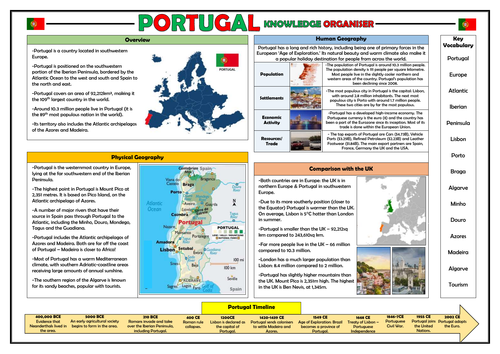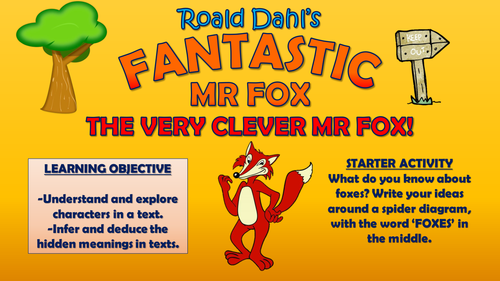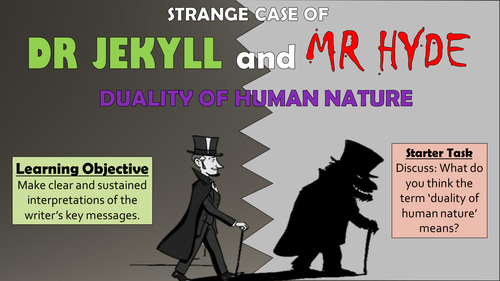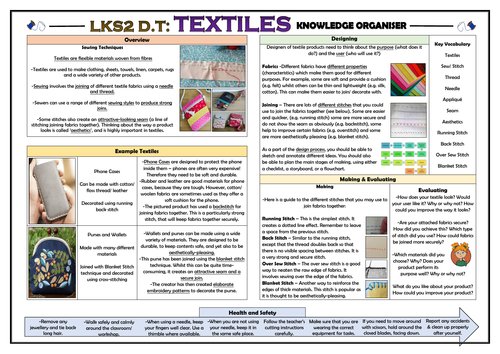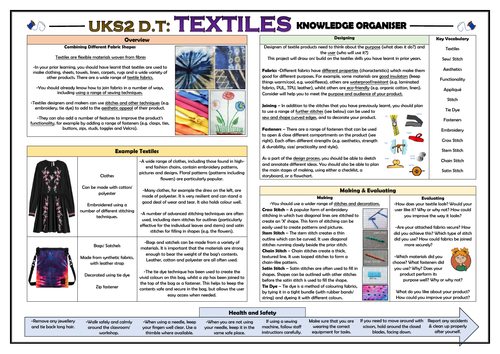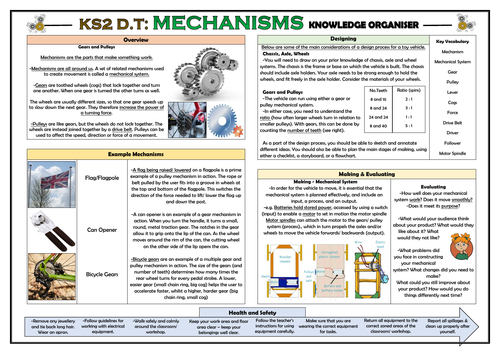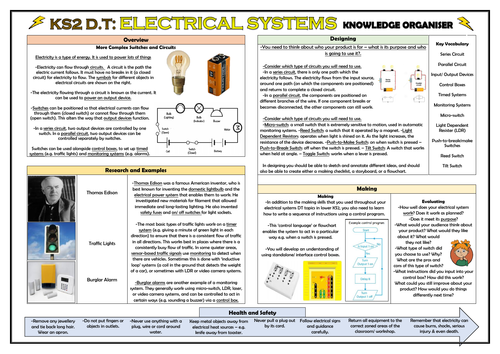
3k+Uploads
1953k+Views
2271k+Downloads
Whole school

North America: Physical and Human Geography (People and Places)
This interesting and highly-stimulating lesson enables students to describe and understand the key aspects of physical geography (e.g. climates, vegetation belts, flora, fauna, mountains, and rivers) and human geography (e.g. types of settlement, populations, use of resources, and trade) in the vast and varied continent of North America. Whilst gaining a wide range of knowledge about the content, students also become familiar with a wide range of vocabulary pertinent to the geography curriculum.
The lesson follows a clear, logical, bite-size learning journey, which guides students towards relevant and constructive learning objectives. Over the course of this journey, they become able to:
Identify North America on a map, and identify the countries and regions within the continent;
Understand key information about the physical and human geography of the continent, through a fun, interactive quiz;
Retrieve, share, and describe their understanding of the physical and human geography of specific locations in North America (Mexico City, Death Valley, The Canadian Shield and the Caribbean Islands) through a jigsaw model task;
Complete a case study of the physical and human geography of their own place in North America, and describe their findings to others;
-Peer assess each other’s descriptions using the learning objectives.
This resource pack includes:
A visually engaging whole-lesson PowerPoint presentation;
Key case-study information sheets on Mexico City, Death Valley, The Canadian Shield and the Caribbean Islands (in both PDF and Word - inside the zip-folder);
A blank case study template.
All images are licensed for commercial use. Note: The final task works best with access to ICT/internet resources.
This resources within this lesson can be easily adapted to suit home/remote learning.

South America: Physical and Human Geography (People and Places)
This interesting and highly-stimulating lesson enables students to describe and understand the key aspects of physical geography (e.g. climates, vegetation belts, flora, fauna, mountains, and rivers) and human geography (e.g. types of settlement, populations, use of resources, and trade) in the vast and varied continent of South America. Whilst gaining a wide range of knowledge about the content, students also become familiar with a wide range of vocabulary pertinent to the geography curriculum.
The lesson follows a clear, logical, bite-size learning journey, which guides students towards relevant and constructive learning objectives. Over the course of this journey, they become able to:
Identify South America on a map, and identify the countries and regions within the continent;
Understand key information about the physical and human geography of the continent, through a fun, interactive quiz;
Retrieve, share, and describe their understanding of the physical and human geography of specific locations in South America (Rio de Janeiro, Machu Picchu, Patagonia and the Amazon Rainforest) through a jigsaw model task;
Complete a case study of the physical and human geography of their own place in South America, and describe their findings to others;
-Peer assess each others’ descriptions using the learning objectives.
This resource pack includes:
A visually engaging whole-lesson PowerPoint presentation;
Key case-study information sheets on Rio de Janeiro, Machu Picchu, Patagonia and the Amazon Rainforest (in both PDF and Word - inside the zip-folder);
A blank case study template.
All images are licensed for commercial use. Note: The final task works best with access to ICT/internet resources.
This resources within this lesson can be easily adapted to suit home/remote learning.

Africa: Physical and Human Geography (People and Places)
This interesting and highly-stimulating lesson enables students to describe and understand the key aspects of physical geography (e.g. climates, vegetation belts, flora, fauna, mountains, and rivers) and human geography (e.g. types of settlement, populations, use of resources, and trade) in the vast and varied continent of Africa. Whilst gaining a wide range of knowledge about the content, students also become familiar with a wide range of vocabulary pertinent to the geography curriculum.
The lesson follows a clear, logical, bite-size learning journey, which guides students towards relevant and constructive learning objectives. Over the course of this journey, they become able to:
Identify Africa on a map, and identify the countries and regions within the continent;
Understand key information about the physical and human geography of the continent, through a fun, interactive quiz;
Retrieve, share, and describe their understanding of the physical and human geography of specific locations in Africa (Sahara Desert, Cape Town, The African Savanna and the Mount Kilimanjaro) through a jigsaw model task;
Complete a case study of the physical and human geography of their own place in Africa, and describe their findings to others;
-Peer assess each others’ descriptions using the learning objectives.
This resource pack includes:
A visually engaging whole-lesson PowerPoint presentation;
Key case-study information sheets on the Sahara Desert, Cape Town, the African Savanna and Mount Kilimanjaro (in both PDF and Word - inside the zip-folder);
A blank case study template.
All images are licensed for commercial use. Note: The final task works best with access to ICT/internet resources.
This resources within this lesson can be easily adapted to suit home/remote learning.

Europe: Physical and Human Geography (People and Places)
This interesting and highly-stimulating lesson enables students to describe and understand the key aspects of physical geography (e.g. climates, vegetation belts, flora, fauna, mountains, and rivers) and human geography (e.g. types of settlement, populations, use of resources, and trade) in the continent of Europe. Whilst gaining a wide range of knowledge about the content, students also become familiar with a wide range of vocabulary pertinent to the geography curriculum.
The lesson follows a clear, logical, bite-size learning journey, which guides students towards relevant and constructive learning objectives. Over the course of this journey, they become able to:
Identify Europe on a map, and identify the countries and regions within the continent;
Understand key information about the physical and human geography of the continent, through a fun, interactive quiz;
Retrieve, share, and describe their understanding of the physical and human geography of specific locations in Europe (Scandinavia, The Mediterranean Sea, Mount Elbrus and the Black Forest) through a jigsaw model task;
Complete a case study of the physical and human geography of their own place in Europe, and describe their findings to others;
-Peer assess each others’ descriptions using the learning objectives.
This resource pack includes:
A visually engaging whole-lesson PowerPoint presentation;
Key case-study information sheets on Scandinavia, the Mediterranean Sea, Mount Elbrus and the Black Forest (in both PDF and Word - inside the zip-folder);
A blank case study template.
All images are licensed for commercial use. Note: The final task works best with access to ICT/internet resources.
This resources within this lesson can be easily adapted to suit home/remote learning.

Oceania: Physical and Human Geography (People and Places)
This interesting and highly-stimulating lesson enables students to describe and understand the key aspects of physical geography (e.g. climates, vegetation belts, flora, fauna, mountains, and rivers) and human geography (e.g. types of settlement, populations, use of resources, and trade) in the region of Oceania. Whilst gaining a wide range of knowledge about the content, students also become familiar with a wide range of vocabulary pertinent to the geography curriculum.
The lesson follows a clear, logical, bite-size learning journey, which guides students towards relevant and constructive learning objectives. Over the course of this journey, they become able to:
Identify Oceania on a map, and identify the countries and regions within the continent;
Understand key information about the physical and human geography of the continent, through a fun, interactive quiz;
Retrieve, share, and describe their understanding of the physical and human geography of specific locations in Oceania (The Outback, The Southern Alps, South Pacific Islands and The Great Barrier Reef) through a jigsaw model task;
Complete a case study of the physical and human geography of their own place in Oceania, and describe their findings to others;
-Peer assess each others’ descriptions using the learning objectives.
This resource pack includes:
A visually engaging whole-lesson PowerPoint presentation;
Key case-study information sheets on The Outback, the Southern Alps, South Pacific Islands and The Great Barrier Reef (in both PDF and Word - inside the zip-folder);
A blank case study template.
All images are licensed for commercial use. Note: The final task works best with access to ICT/internet resources.
This resources within this lesson can be easily adapted to suit home/remote learning.

Antarctica - Human and Physical Geography (People and Places)
This interesting and highly-stimulating lesson enables students to describe and understand the key aspects of physical geography and human geography in the region of Antarctica. Whilst gaining a wide range of knowledge about the content, students also become familiar with a wide range of vocabulary pertinent to the geography curriculum.
The lesson follows a clear, logical, bite-size learning journey, which guides students towards relevant and constructive learning objectives. Over the course of this journey, they become able to:
Identify Antarctica on a map, and identify the countries and regions within the continent;
Understand key information about the physical and human geography of the continent, through a fun, interactive quiz;
Retrieve, share, and describe their understanding of the physical and human geography of specific locations in Antarctica (The South Pole, The Vinson Massif, Emperor Penguins and TheAntarctic Peninsula) through a jigsaw model task;
Complete a case study of the physical and human geography of their own place in Antarctica, and describe their findings to others;
-Peer assess each others’ descriptions using the learning objectives.
This resource pack includes:
A visually engaging whole-lesson PowerPoint presentation;
Key case-study information sheets on The South Pole, the Vinson Massif, Emperor Penguins and The Antarctic Peninsula (in both PDF and Word - inside the zip-folder);
A blank case study template.
All images are licensed for commercial use. Note: The final task works best with access to ICT/internet resources.
This resources within this lesson can be easily adapted to suit home/remote learning.

The Highwayman - Poem Analysis!
This comprehensive analysis enables students to understand the key content, language and structural features of Alfred Noyes’ poem ‘The Highwayman.’
The resources is comprised of a 24-slide PowerPoint presentation, which includes:
-Contextual Information: The Poet/ Writing the Poem/ Highwaymen
-Detailed Stanza-by-Stanza Analysis of the Poem
-Noyes Key Messages
-Questions for Further Consideration
Annnotations are colour-coded for ease of reference. The resource is tried and tested, and helps to ensure that students develop a well-rounded understanding of the poem and its meanings.
A PDF version of the resource is also included, to protect formatting in case of differences in software. All images are licensed for commercial use.

Croatia Knowledge Organiser - KS2 Geography Place Knowledge!
This clear, detailed and visually-appealing resource offers a complete reference point for students revising knowledge relating to Croatia, as a part of their study of place, human and physical geography. It contains comprehensive sections on:
Overview and Maps;
Physical Geography;
Human Geography;
Comparison with the United Kingdom;
Croatia Timeline;
Key Vocabulary.
The organiser is designed to help children to learn the relevant place, human and physical geography knowledge from the KS2 Geography National Curriculum: -‘understand geographical similarities and differences through the study of human and physical geography of a region of the United Kingdom and a region in a European country’
‘physical geography, including: climate zones, rivers, mountains, volcanoes and earthquakes’
-‘human geography, including: types of settlement and land use, economic activity
including trade links, and the distribution of natural resources including energy.’
The resource is designed to be printed onto A3, and is provided as both a PDF and a Word version (so that you can edit if you want to). All images used are licensed for commercial use and are cited on a separate document (included).

Portugal Knowledge Organiser - KS2 Geography Place Knowledge!
This clear, detailed and visually-appealing resource offers a complete reference point for students revising knowledge relating to Portugal, as a part of their study of place, human and physical geography. It contains comprehensive sections on:
Overview and Maps;
Physical Geography;
Human Geography;
Comparison with the United Kingdom;
Portugal Timeline;
Key Vocabulary.
The organiser is designed to help children to learn the relevant place, human and physical geography knowledge from the KS2 Geography National Curriculum: -‘understand geographical similarities and differences through the study of human and physical geography of a region of the United Kingdom and a region in a European country’
‘physical geography, including: climate zones, rivers, mountains, volcanoes and earthquakes’
-‘human geography, including: types of settlement and land use, economic activity
including trade links, and the distribution of natural resources including energy.’
The resource is designed to be printed onto A3, and is provided as both a PDF and a Word version (so that you can edit if you want to). All images used are licensed for commercial use and are cited on a separate document (included).

The Sign of Four - Tonga!
In this engaging and informative lesson, students learn to make sustained and precise interpretations of the character of Tonga in 'The Sign of Four.' In particular, students analyse Watson’s account of Tonga’s appearance, mannerisms and behaviours in chapter 10 of the novel, before linking this to notions of the savage cultural ‘other’ that were commonly held during the colonial era in Britain.
The lesson follows a step-by-step learning journey, in which students learn through:
- Understanding the social and cultural context of Britain's colonial past;
- Reading and understanding chapters 9 and 10, in which Tonga makes his appearance;
- Identifying and analysing the language techniques used by Doyle in describing Tonga;
- Understanding how readers at the time would react to the depiction of Tonga;
- Peer assessing each other's learning attempts.
Included is:
- Whole Lesson PowerPoint - colourful and comprehensive;
- Paper Copies of Chapters 9 and 10;
- Tonga - Links to Context Worksheet (and teacher answer sheet);
- Essay Template;
- Detailed Lesson Plan
There are also opportunities for group learning, peer assessment, and whole class discussion. These resources were originally taught to GCSE students, but with subtle adaptations they have also been used with both younger and older (up to A Level) students.
Please note that you'll need access to internet/laptops for opening quiz activity.
All images are licensed for commercial use, and image rights are listed on the last page of the presentation.

The Sign of Four - The Ending: The Testimony of Jonathan Small!
In this engaging and informative lesson, students learn to make sustained and precise interpretations of the structural features within The Sign of Four. In particular, students analyse Jonathan Small’s testimony in chapter 12 of the novel, before linking this to the idea of a fitting resolution within the narrative structure model.
The lesson follows a step-by-step learning journey, in which students learn through:
- Reading and understanding chapters 11 and 12, in which Jonathan Small gives his testimony;
- Sequencing and storyboarding the events of Jonathan Small's life;
- Identifying and analysing the structural stages of narrative structure, and applying this to The Sign of Four;
- Understanding how readers at the time would react to the depiction of Jonathan Small;
- Peer assessing each other's learning attempts.
Included is:
- Whole Lesson PowerPoint - colourful and comprehensive;
- Paper Copies of Chapters 11 and 12;
- Storyboard Template (and PDF);
- Narrative Structure Template (and PDF);
- Essay Template;
- Detailed Lesson Plan
There are also opportunities for group learning, peer assessment, and whole class discussion. These resources were originally taught to GCSE students, but with subtle adaptations they have also been used with both younger and older (up to A Level) students.
All images are licensed for commercial use, and image rights are listed on the last page of the presentation.

The Sign of Four Comprehension Activities Booklet!
This resource booklet contains a wide range of age-appropriate, engaging, and meaningful comprehension activities for use throughout the reading of Arthur Conan Doyle's 'The Sign of Four.' Teachers have found them particularly useful in exam revision, comprehension tasks, or guided reading sessions. They are perfect for aiding the progress of students towards meeting the KS4 expectations within the new National Curriculum framework - this makes the tasks suitable for all examining bodies. Students have found these resources extremely engaging, and for teachers there is explicit information within each task regarding which comprehension strands the task is designed to demonstrate. They also relate to key extracts, characters, and themes from the story, ensuring that students gain a deep understanding of the text.
Activities within the booklet include:
- 'Context: 19th Century London' - to aid students with 'Drawing on knowledge of the purpose, audience and context of the writing, including its social, historical and cultural context and the literary tradition to which it belongs, to inform evaluation;'
- 'Doyle's Description' - to aid students with 'Analysing a writer’s choice of vocabulary, form, grammatical and structural features, and evaluating their effectiveness and impact;'
- 'Mary Morstan' - to aid students with 'Seeking evidence in the text to support a point of view, including justifying inferences with evidence;'
- 'Editing the Text' - to aid students with 'Making an informed personal response, recognising that other responses to a text are possible and evaluating these.'
Plus many, many more activities (the booklet is around 30 pages in length!) I've also added it as a PDF in case the formatting differs on your computer.
All images are licensed for commercial use, and are cited on a separate document (included).

Fantastic Mr Fox - The Very Clever Mr Fox!
This fun and informative helps students to gain a deeper understanding of the main character in Roald Dahl’s ‘Fantastic Mr Fox:’ Mr Fox himself! Students use their skills of inference and deduction in order to establish key information about Mr Fox’s character, likes, dislikes, and mannerisms. They then create a character profile using the information that they have gathered!
The lesson follows a step-by-step learning journey, in which children learn through:
-Considering how Roald Dahl was influenced by real-life foxes in his characterisation;
- Reading and understanding extracts from the opening of Fantastic Mr Fox, in which Mr Fox's character traits are revealed;
- Inferring and deducing key features about Mr Fox from across the text;
- Creating a character profile for Mr Fox, utilising knowledge that they have gathered from over the course of the lesson;
- Self assessing their own learning attempts.
Included is:
- Whole lesson PowerPoint - colourful and comprehensive;
- Text Detectives Worksheet (and answer sheet);
- Selected extracts - Fantastic Mr Fox;
- Character Profile Template (Word and PDF);
- Comprehensive lesson plan.
There are also opportunities for group learning, speaking and listening, peer assessment, and whole class discussion. I originally used these resources with a mixed-ability year 3 class, however colleagues have used them for between years 1 and 8 with some adaptations.
All images are licensed for commercial use, and image rights are listed on the last page of the presentation.

Fantastic Mr Fox - Structure of the Story!
This fun and informative lesson helps students to understand the narrative structure used by Roald Dahl throughout ‘Fantastic Mr Fox.’ In particular, students identify the features of each stage of the narrative structure within the story, before recreating sections of the structure themselves!
The lesson follows a step-by-step learning journey, in which children learn through:
- Taking part in a fun group quiz to recap on the key elements of the plot leading up to the ending;
- Reading and understanding extracts from the ending of Fantastic Mr Fox, answering comprehension questions to demonstrate their understanding;
-Understanding features of narrative structure and applying the plot of Fantastic Mr Fox to the individual elements;
-Recreating elements of the plot, using their understanding of the stages of narrative structure;
- Self assessing their own learning attempts.
Included is:
- Whole lesson PowerPoint - colourful and comprehensive;
- Storyboard Template (and PDF version);
- Selected extracts - Fantastic Mr Fox;
- Recreations Template (and PDF version);
- Comprehensive lesson plan.
There are also opportunities for group learning, speaking and listening, peer assessment, and whole class discussion. I originally used these resources with a mixed-ability year 3 class, however colleagues have used them for between years 1 and 8 with some adaptations.
All images are licensed for commercial use, and image rights are listed on the last page of the presentation.

Dr Jekyll and Mr Hyde: Duality of Human Nature!
This engaging and informative lesson enables students to make sustained and insightful interpretations of the theme of duality within Stevenson’s ‘Strange Case of Dr Jekyll and Mr Hyde.’ In particular, students explore the differences in personality between Jekyll and Hyde, and infer Stevenson’s key messages about the duality of human nature.
The lesson follows a step-by-step learning journey, in which children learn through:
- Defining and understanding the belief in the duality of human nature across history;
- Reading and comprehending Jekyll's view of the duality of human nature in the final chapter;
- Comparing and contrasting the personalities of Jekyll and Hyde;
- Retelling the same event from the viewpoint of both Jekyll and Hyde;
- Analysing Stevenson's key message about the duality of the mind;
- Peer assessing each other's learning attempts.
Included is:
- Whole lesson PowerPoint - colourful and comprehensive;
- Extract from the final chapter;
- Jekyll's duality worksheet (and answer sheet for teachers);
- Analysis template with success criteria for creating well-structured responses;
- Comprehensive lesson plan.
There are also opportunities for group learning, peer assessment, and whole class discussion. These resources were originally taught to GCSE students, but with subtle adaptations they have also been used with KS3 and A Level Students.
All images are licensed for commercial use, and image rights are listed on the last page of the presentation.

DT: Textiles - Sewing Techniques - Lower KS2 Knowledge Organiser!
This clear, detailed and visually-appealing resource offers a complete reference point for children, teachers and parents building their knowledge of Textiles as a part of the KS2 curriculum in Design and Technology. The organiser is clear, logical and fully meets the expectations of the National Curriculum.
This organiser has a particular emphasis on developing sewing techniques.
It includes sections on:
-Overview - Textiles and Sewing Techniques;
-Example Textiles - Phone Cases, Wallets and Purses;
-Designing;
-Making and Evaluating;
-Health and Safety Guidance.
The resource is designed to be printed onto A3, and is provided as both a PDF and a Word version (so that you can edit if you want to). All images used are licensed for commercial use and are cited on a separate document (included).

DT: Textiles - Combining Different Fabric Shapes - Upper KS2 Knowledge Organiser!
This clear, detailed and visually-appealing resource offers a complete reference point for children, teachers and parents developing their knowledge of Textiles as a part of the KS2 curriculum in Design and Technology. The organiser is clear, logical and fully meets the expectations of the National Curriculum.
This organiser has a particular emphasis on combining different fabric shapes
It includes sections on:
-Overview - Textiles and Combining Fabric Shapes;
-Example Textiles - Embroidered Clothes and Tie Dye Bags;
-Designing;
-Making and Evaluating;
-Health and Safety Guidance.
The resource is designed to be printed onto A3, and is provided as both a PDF and a Word version (so that you can edit if you want to). All images used are licensed for commercial use and are cited on a separate document (included).

DT: Mechanisms - Gears and Pulleys - KS2 Knowledge Organiser!
This clear, detailed and visually-appealing resource offers a complete reference point for children, teachers and parents building their knowledge of mechanical systems as a part of the KS2 curriculum in Design and Technology. The organiser is clear, logical and fully meets the expectations of the National Curriculum.
This organiser has a particular emphasis on gears and pulleys
It includes sections on:
-Overview - Mechanical Systems, Gears and Pulleys;
-Example Mechanisms - Flagpole, Can Opener, Bicycle;
-Designing - Toy Car;
-Making and Evaluating - Toy Car;
-Health and Safety Guidance.
The resource is designed to be printed onto A3, and is provided as both a PDF and a Word version (so that you can edit if you want to). All images used are licensed for commercial use and are cited on a separate document (included).

DT: Electrical Systems - More Complex Switches and Circuits - KS2 Knowledge Organiser!
This clear, detailed and visually-appealing resource offers a complete reference point for children, teachers and parents building their knowledge of electrical systems as a part of the KS2 curriculum in Design and Technology. The organiser is clear, logical and fully meets the expectations of the National Curriculum.
This organiser has a particular emphasis on further switches and circuits.
It includes sections on:
-Overview - Electrical Systems, More Complex Circuits and Switches;
-Research - Thomas Edison, Traffic Lights, Burglar Alarm;
-Designing;
-Making and Evaluating;
-Health and Safety Guidance.
The resource is designed to be printed onto A3, and is provided as both a PDF and a Word version (so that you can edit if you want to). All images used are licensed for commercial use and are cited on a separate document (included).

The War of the Worlds - Whole Class Reading Session!
This whole class reading session aims to develop children’s comprehension skills through a reading an extract from H.G. Wells’ ‘The War of the Worlds.’ The reading focuses on two extracts in which the Martians’ physical appearance is described. The extracts have been modified slightly to make them more accessible for a younger audience.
The resource pack includes the extract and all of the activities for the session, which the class are guided through via a comprehensive PowerPoint presentation. The reading is followed by a series of activities aiming to develop children’s retrieval, explanation, inference, prediction and summarising skills. It also contains a vocabulary check immediately after the extract is read to clarify any unfamiliar/ difficult language.
The tasks are comprised of quick-check questions, solo thinking, pair/ group discussions and deeper thinking activities.
The session is best suited for children in years 5-8, although with minor adaptations it could feasibly be used with slightly younger and older year groups. The session is suitable for home/ remote learning. The resources are suitable for home/ remote learning.

